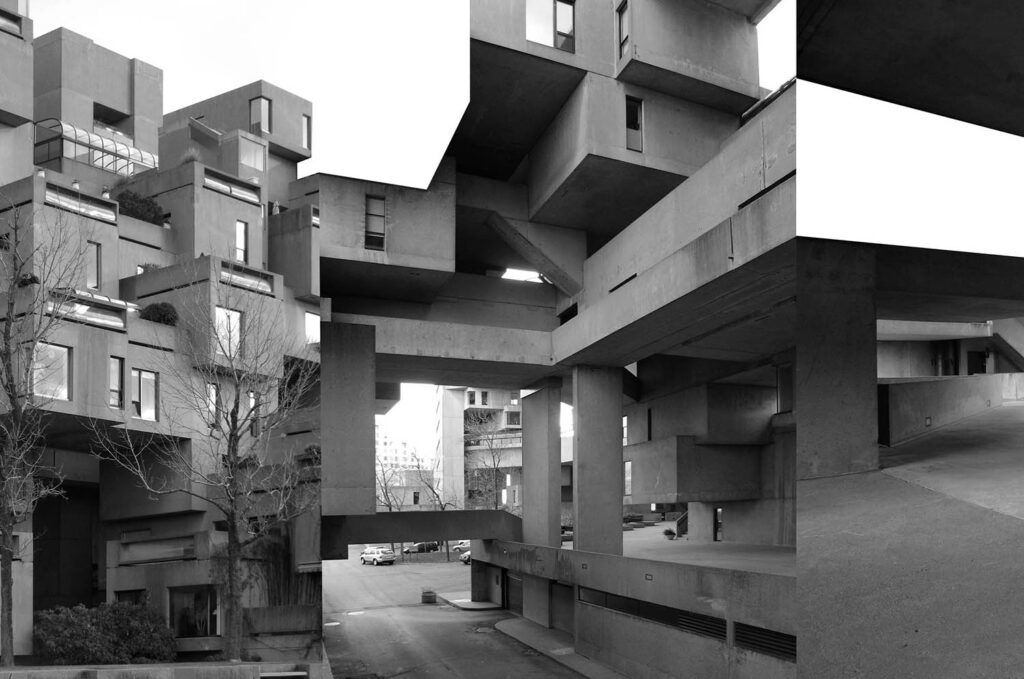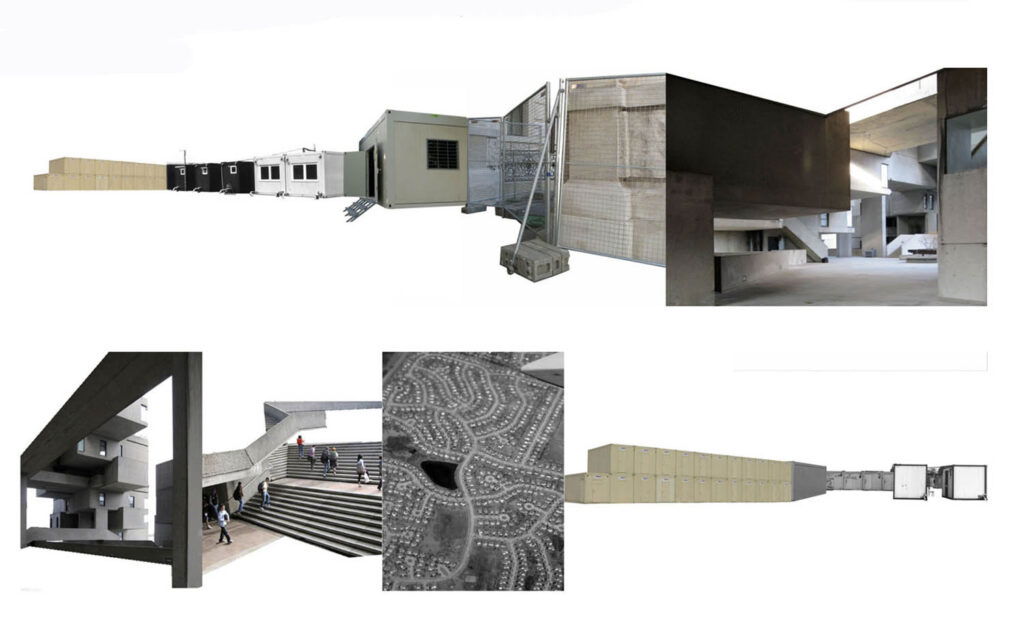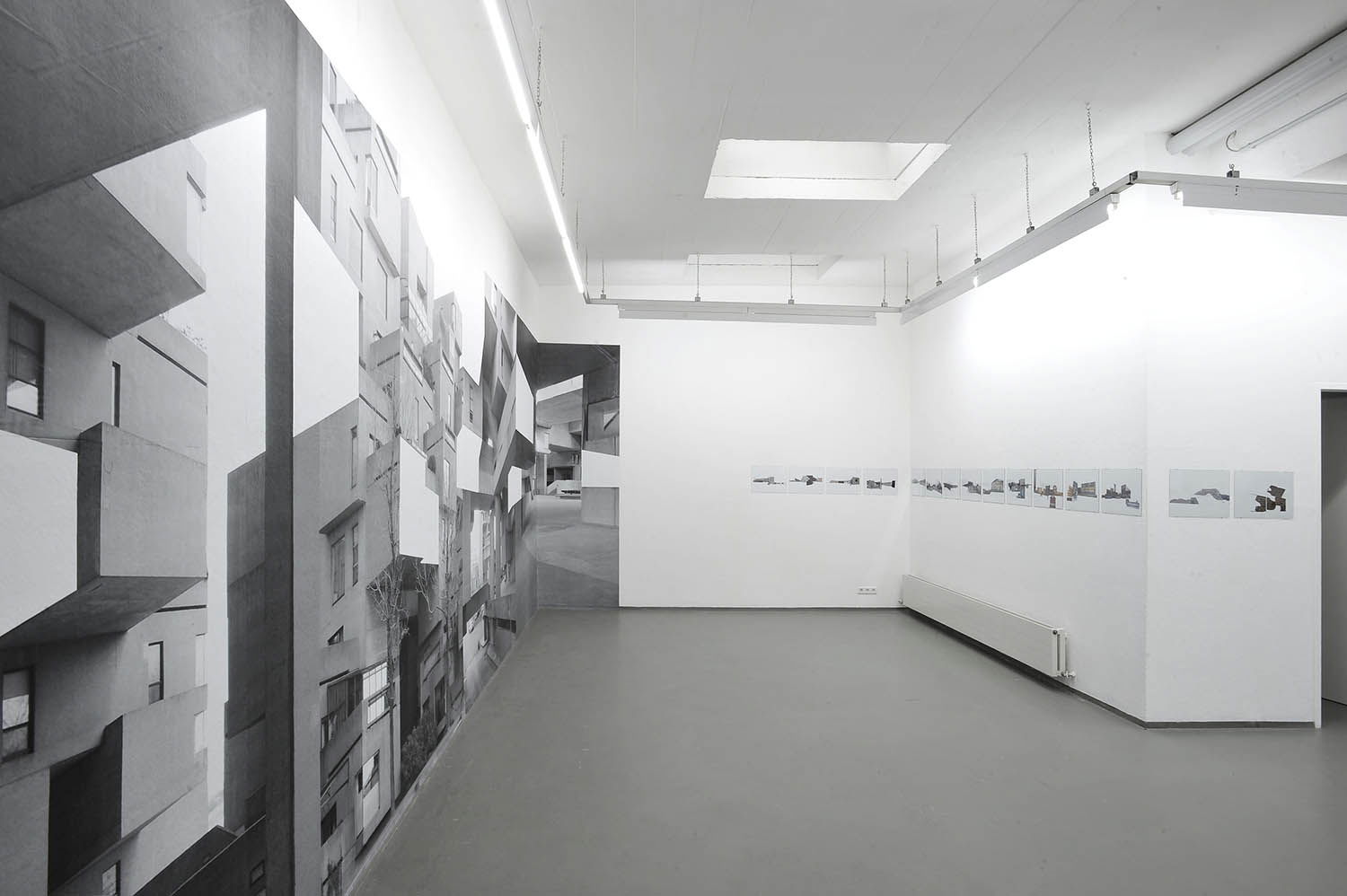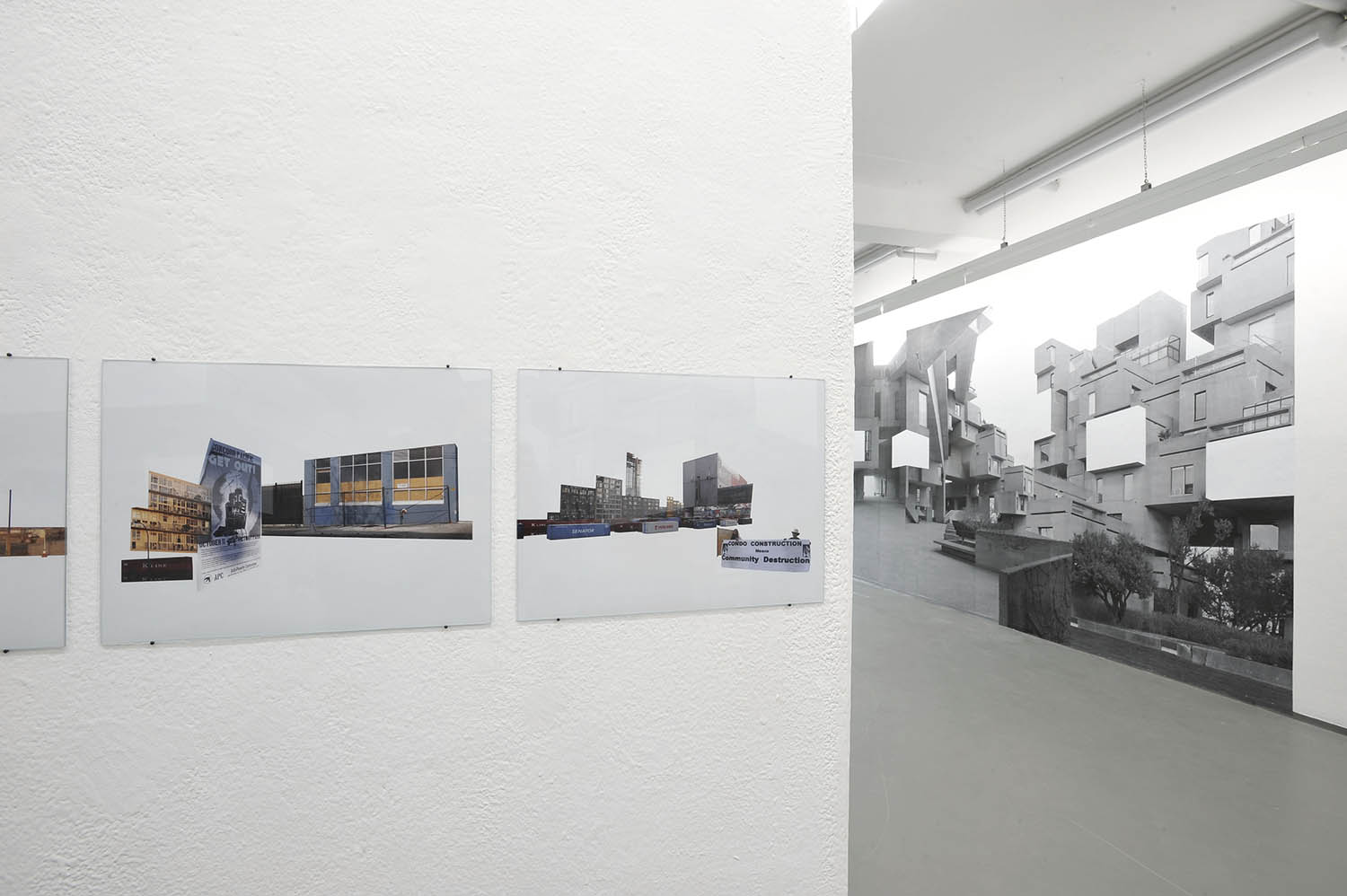Bitter / Weber
Plugged in, Fenced out
The housing complex “Habitat 67” was planned and realised by the Israeli-Canadian architect and urban planner Moshe Safdie between 1966 and 1967 on the occasion of Expo 67, the world exhibition held in Montreal. “Habitat 67” became an icon of a metabolist movement in architecture originating in Japan, which wanted to plan the city and architecture as an organic, constantly renewing supply structure that could be adapted to changing demands. For a brief moment, this architectural ensemble stood – in the sense of the urban metabolism movement – for a “utopian” counter-image to the modern concept of the functional separation of life and work, of housing, leisure, transport and traffic. In the exhibition “Plugged in, Fenced out”, the photographic research material is transferred into a large-format, black-and-white screened wall newspaper. Modules and collages of architectural elements of contemporary dystopias – temporary container villages, provisional housing, mobile fencing-in and fencing-out devices – are mounted and inscribed in the representation of this icon of a realised utopia.

The photographic material of the development of spaces and perspectives becomes a spatial dispositif that negotiates the loss of the utopian potential of architecture, but also the everyday and spectacular dystopias that currently shape and form our cities and urban experiences. »Plugged in, Fenced out« addresses current urbanization processes whose logic is determined by usability, flexibility, effectiveness, mobility and the mere use of the city and the urban terrain. The work no longer poses the question of urban utopias, but rather draws attention to the inconspicuous, remote, everyday, but also spectacular forms of current “metabolistic” processes (e.g. EURO 08, Vienna) and asks about the effect that these forms have have on our everyday urban life. And that is – in addition to the architectural, social and political – always an aesthetic question: which images and “regimes of view” mediatize and legitimize these dystopian spaces, which conditions of their production are concealed, which processes of appropriation and expropriation are carried out in the current “spatial images” and spatial productions made visible? Are possible other urban worlds conceivable?
Or in the words of Siegfried Kracauer from the 1960s: “Every social class has the space assigned to it. (…) Every typical space is brought about by typical social conditions, which are expressed within it without the disruptive interference of consciousness. Everything that is denied by consciousness, everything that is otherwise overlooked, is involved in its construction. The spatial images are the dreams of society. Wherever the hieroglyph of any spatial image is deciphered, there the basis of social reality is presented.” (Siegfried Kracauer, Strassen in Berlin and elsewhere. Berlin, 1987)





